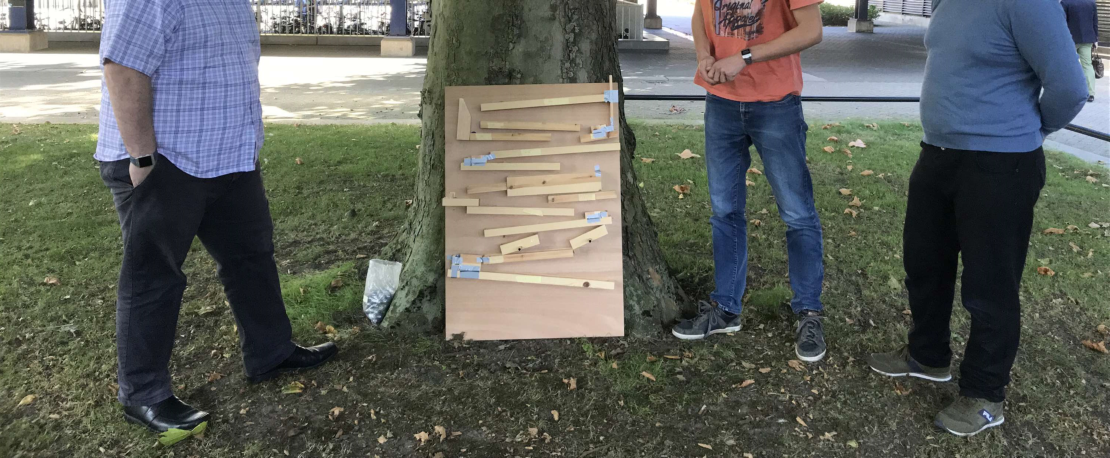As a child, you may have made your own marble runs, or played the classic game Screwball Scramble. Students from the University of Twente designed their own marble runs and simulated their design in the open-source particle simulator MercuryDPM to understand the fundamental science behind these games. At the same time, the students researched the code of MercuryDPM.
Prof Dr Anthony Thornton and Dr Thomas Weinhart started this project after a Dutch news story on the American TV show ‘Last Week Tonight With John Oliver’ sponsoring the Dutch YouTube channel ‘Jelle’s Marble Runs’. “A colleague sent us the news story, asking whether we could simulate these marble runs”, says Thornton.
Student project
Thornton and Weinhart started a project for their Bachelor students to try and model marble runs. The students were tasked to build a physical marble run and to simulate their design in the open-source particle simulator MercuryDPM. The students also had to use their simulations to find the marble properties that ran the fastest. To design the best marble, they had to understand the fundamental science behind these games.
Designing a marble run
One of the students working on the project was Mechanical Engineering student Swen van den Heuvel. He designed a marble run that was able to filter marbles on bounciness, size and mass. He was able to simulate his marble run with an average difference between real and simulated run times of 7.2%, which is within the experimental measurement error. “Especially highly elastic or bouncy marbles and aspherical marbles proved hard to simulate”, says van den Heuvel. He was then able to use the software to design an optimal marble and obtain the fastest time through the course.
 The marble run designed by Swen van den Heuvel.
The marble run designed by Swen van den Heuvel.
MercuryDPM
The particle simulator MercuryDPM is led by Thornton and Weinhart and developed by many Universities around the world. It was designed to simulate situations where you’re dealing with millions of particles. You could, for example, design a new industrial mixer and then simulate where all the particles go to research its performance before actually building it. “To be able to simulate millions of particles, we had to make some simplifications. But we didn’t know how this affected the simulation of single particles”, explain Thornton.
Applications
Thornton and Weinhart wanted to know if it was possible to accurately simulate single particles in their simulator. With his research project, van den Heuvel was able to prove that. “His results mean that our simulator can also be used to design machines with single particles. Like the filters in vending machines that try to distinguish fake coins from real ones.
More information
Swen van den Heuvel is a bachelor student in Mechanical Engineering. Prof Dr Anthony Thornton and Dr Thomas Weinhart are adjunct professor and associate professor respectively in the research group Multi Scale Mechanics (MSM; Faculty of ET). Both are also ‘Featured Scientists’.






